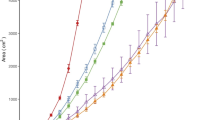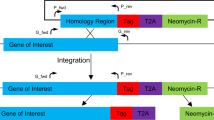Abstract.
We have employed a genetic complementation screening to identify genetic markers of heat stress tolerance and visceralisation of Leishmania infection. Leishmania major, which has a low thermotolerance and which causes cutaneous lesions, was transfected with a cosmid library of L. donovani DNA. The recombinant parasites were then screened either for thermotolerance or selected by repeated passage in BALB/c mice. Cosmids which conferred selective advantage were isolated. Several strategies were tested to identify the gene(s) within the cosmids responsible for the observed selective advantages. Of the approaches tested, the complete sequence analysis of the cosmids and subsequent screening of defined candidate ORFs proved to be the method of choice. Other approaches, such as creation of sub-libraries or transposon insertion strategies proved to be unsuccessful.
Similar content being viewed by others
Author information
Authors and Affiliations
Additional information
Electronic Publication
Rights and permissions
About this article
Cite this article
Hoyer, C., Mellenthin, K., Schilhabel, M. et al. Use of genetic complementation to identify gene(s) which specify species-specific organ tropism of Leishmania . Med Microbiol Immunol 190, 43–46 (2001). https://doi.org/10.1007/s004300100077
Published:
Issue Date:
DOI: https://doi.org/10.1007/s004300100077




